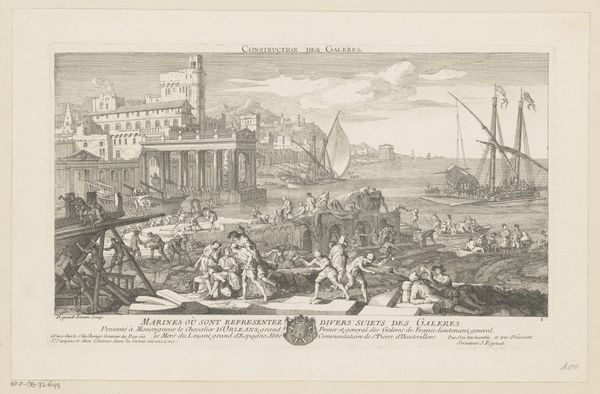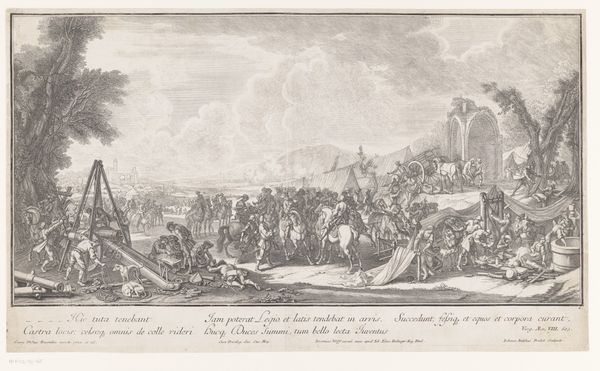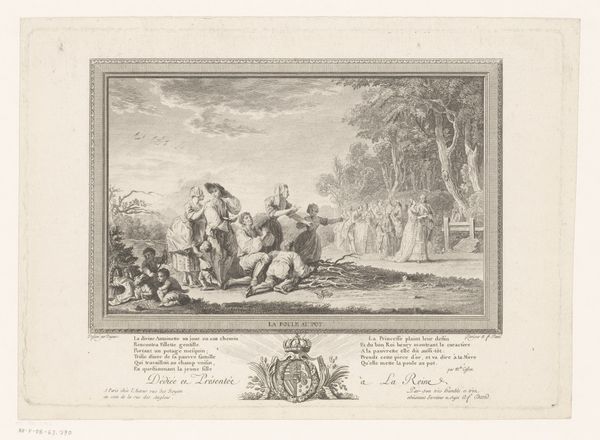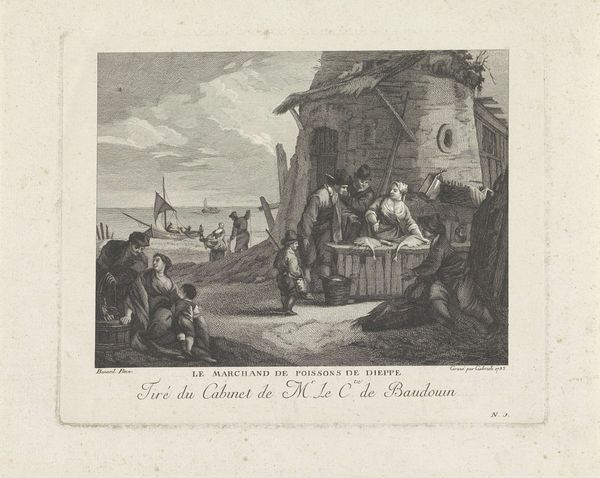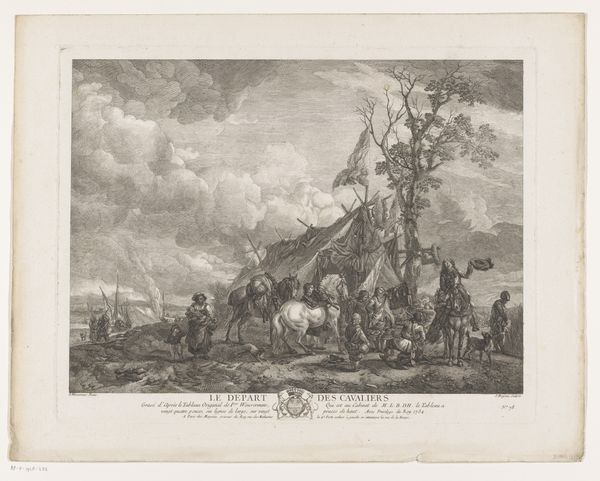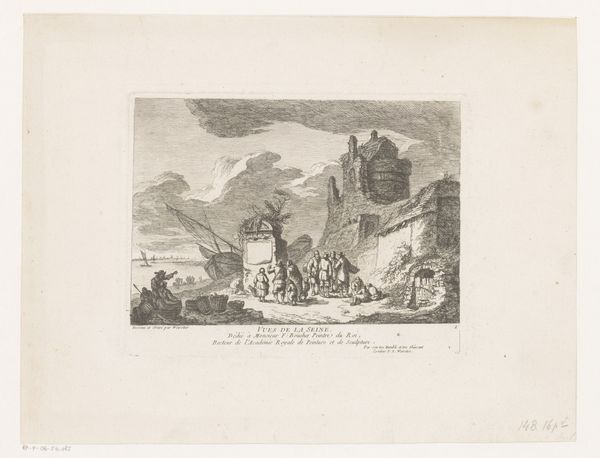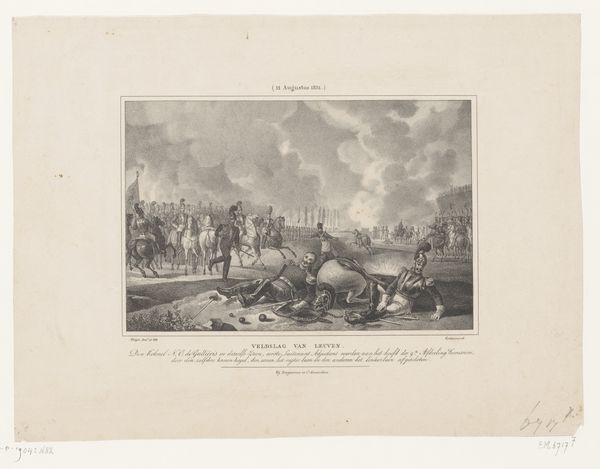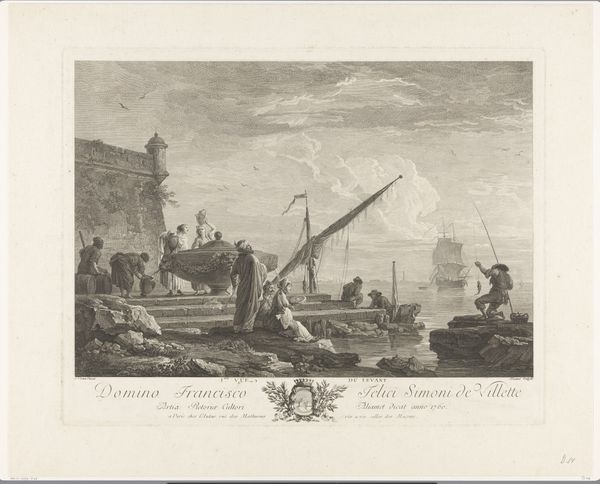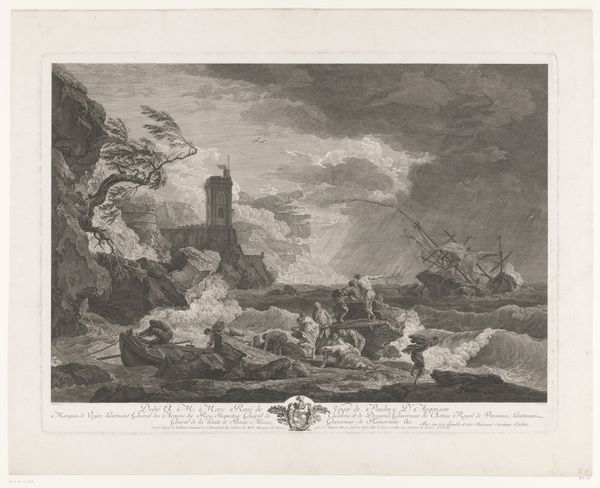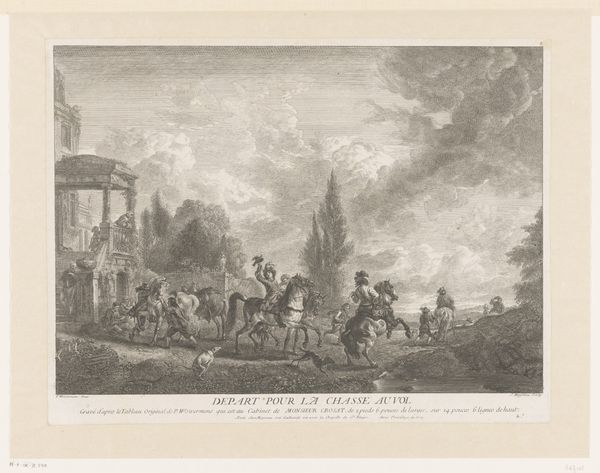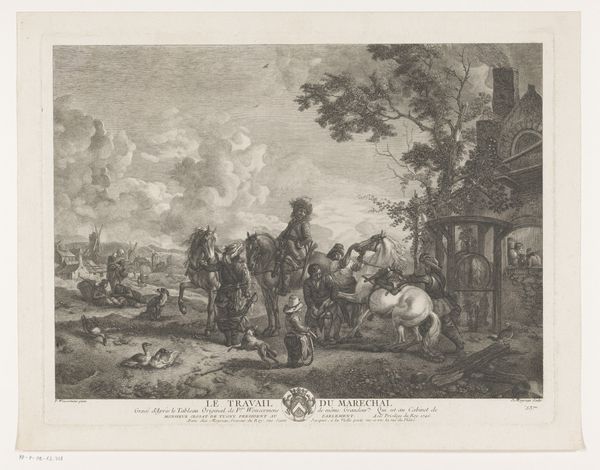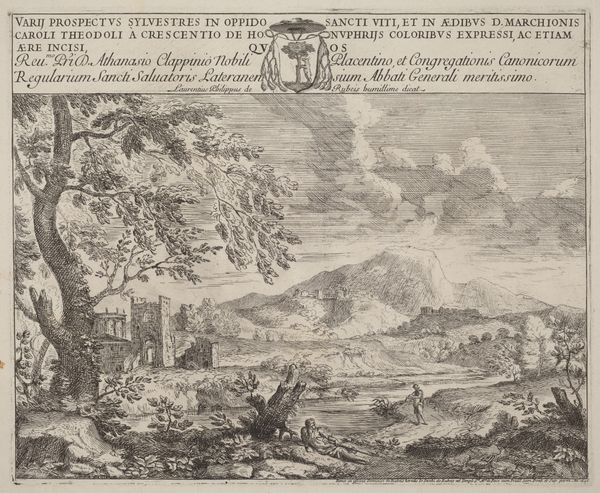
print, engraving
#
allegory
# print
#
old engraving style
#
figuration
#
line
#
cityscape
#
history-painting
#
engraving
#
rococo
Dimensions: height 358 mm, width 454 mm
Copyright: Rijks Museum: Open Domain
Curator: This engraving from between 1761 and 1762 is entitled "Ships Presented to the King by the French Provinces," attributed to Benoit Louis Prevost. What strikes you most about it? Editor: Well, initially, the stark linearity jumps out. The Rococo style renders everything in precise detail, but it almost feels staged, wouldn't you say? It’s all presentation. Curator: Absolutely. The symbolism here is fascinating. The ships being presented represent the wealth and power of the French provinces, a tribute to the monarchy. We can see allegorical figures intermingling with scenes of naval construction. It is also worth mentioning that naval construction in France experienced substantial growth in the mid-18th century, so its representation holds social weight, I would suggest. Editor: Indeed. It really draws attention to the means of production, to the materiality that underpins that power. Engravings like these were crucial for disseminating information and celebrating royal authority; produced en masse to circulate those very ideas. Who benefited most directly from this visual culture and from naval expansion, though? It is crucial to always reflect on it. Curator: That’s right; these images shape public perception, fostering loyalty to the crown. Observe how the artist contrasts the bustling port with the serene presentation scene, it emphasizes control of nature by social structures, what is wild and immense (the maritime environment), against constructed meaning: The divine mandate, the prosperity assured to all by a wise and virtuous king, or, the king in service of people. Editor: And of course, the very act of creating this image relies on labor, materials, and the skill of the engraver, which speaks to your very concept. The choice of printmaking made it accessible—but it was also easily controlled by the dominant regime. Curator: Yes, but despite the propagandistic aspect, there's an undeniable artistic merit. Look at the depth achieved through meticulous lines. The symbolic language conveys so much about the cultural values of the time, I believe. Editor: I concur. There is no value in isolating this artistic skill and output from its context. It reminds us that even celebrations of wealth involve a network of production, not just symbolism, that are never devoid of conflict, be it labor force exploitation, environmental degradation or access to power, or even historical revision. Curator: It's a lens into the complex interplay between power, representation, and national identity. Editor: And a poignant reminder to look beyond the gilded surface to the laboring hands that brought it into being.
Comments
No comments
Be the first to comment and join the conversation on the ultimate creative platform.
